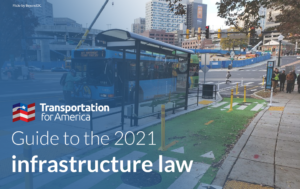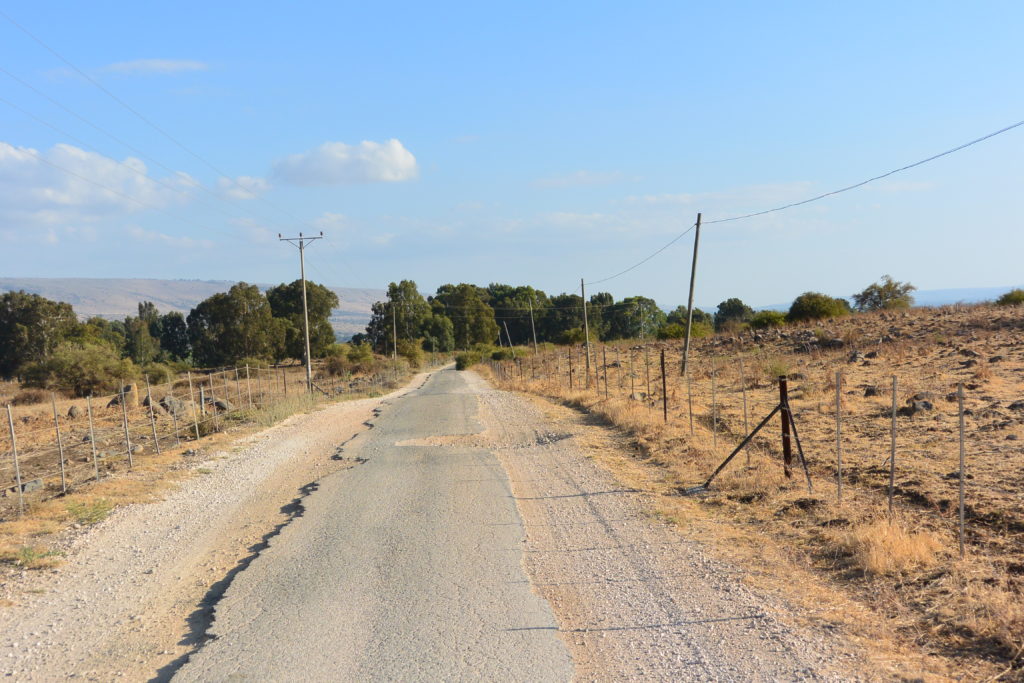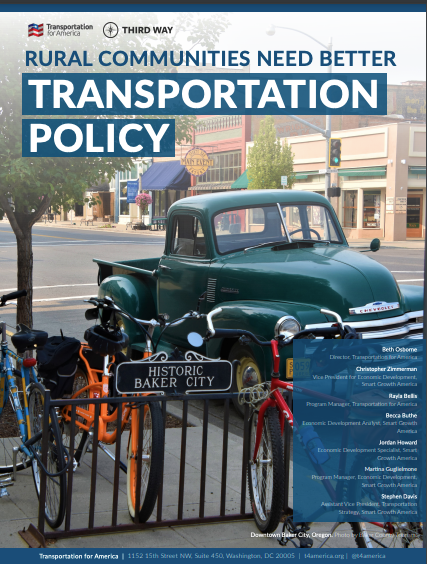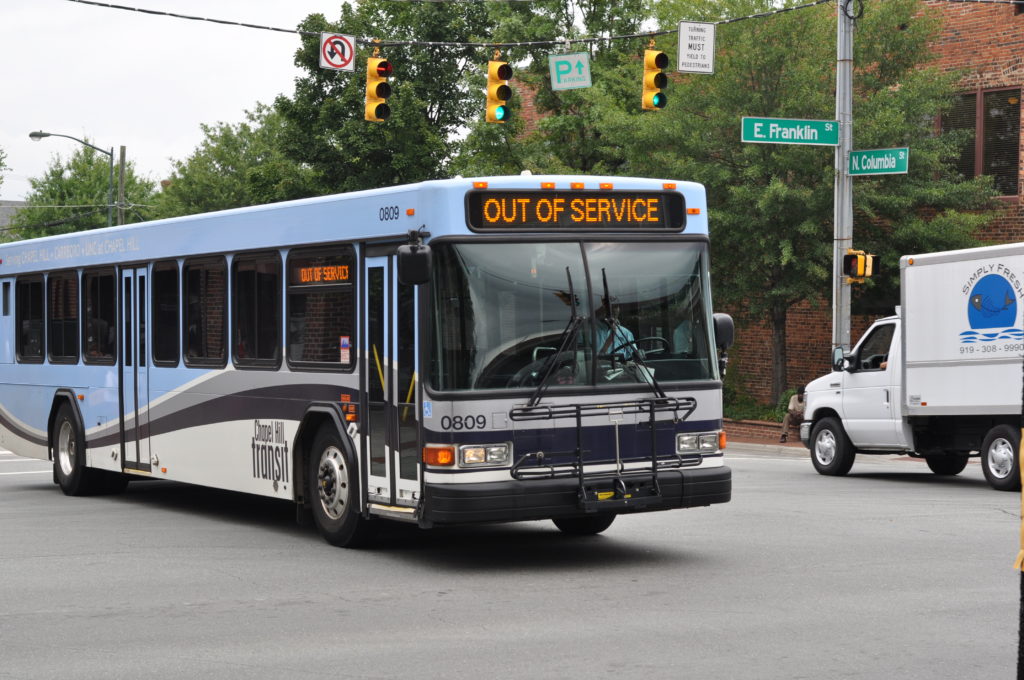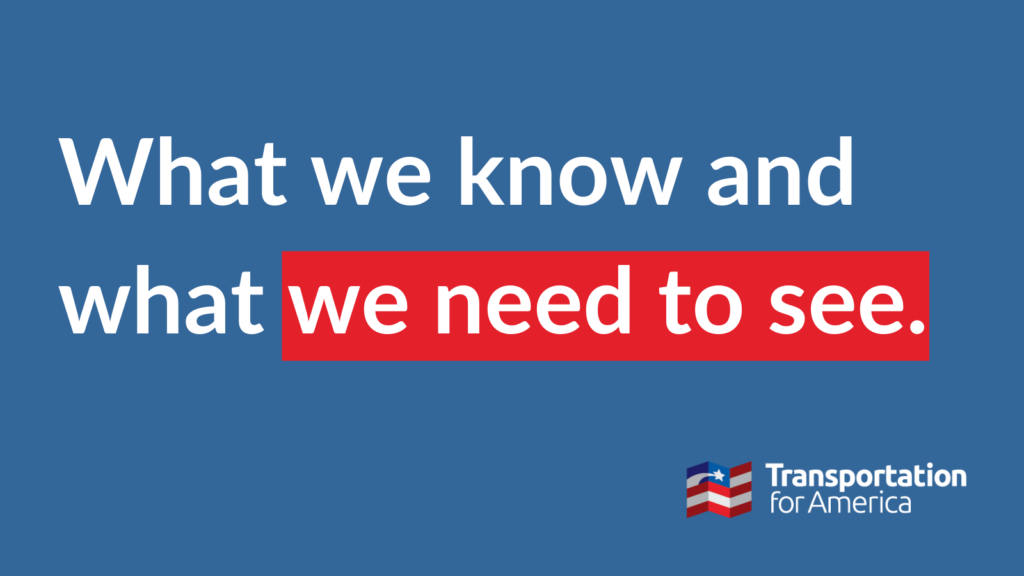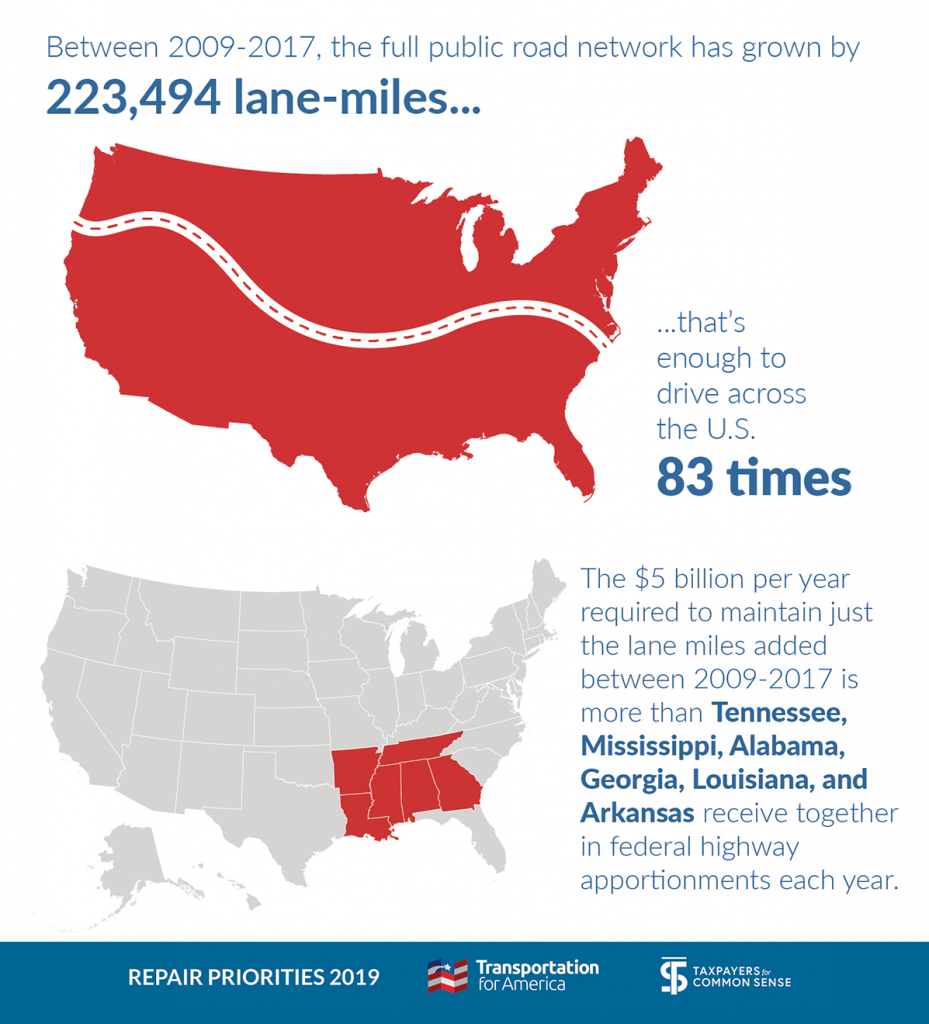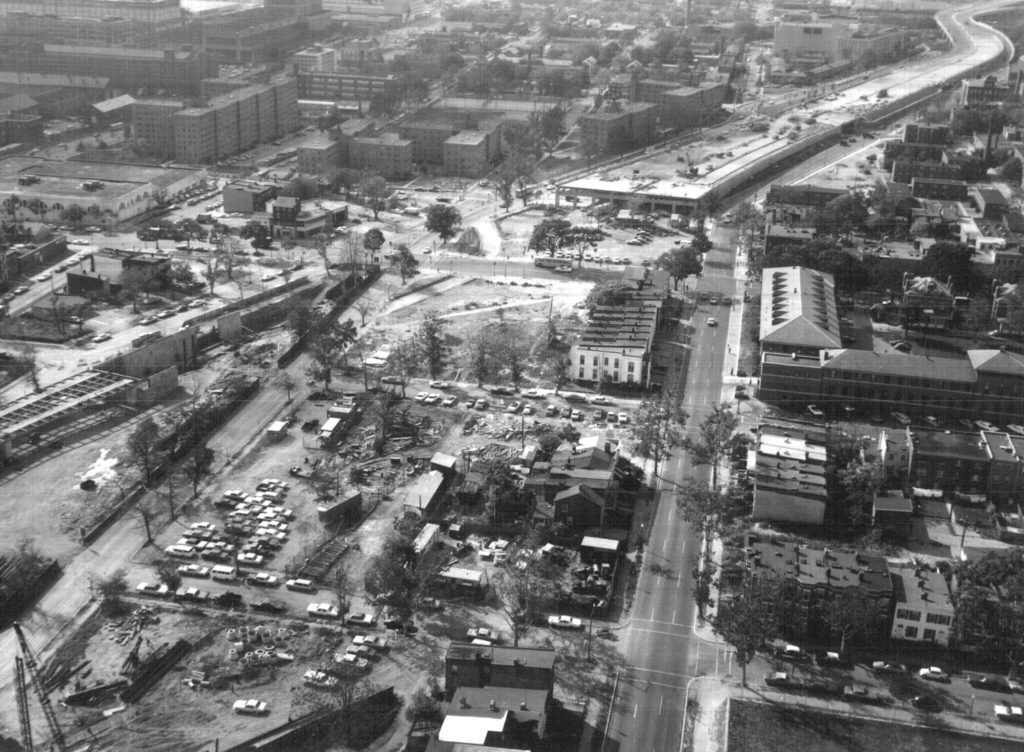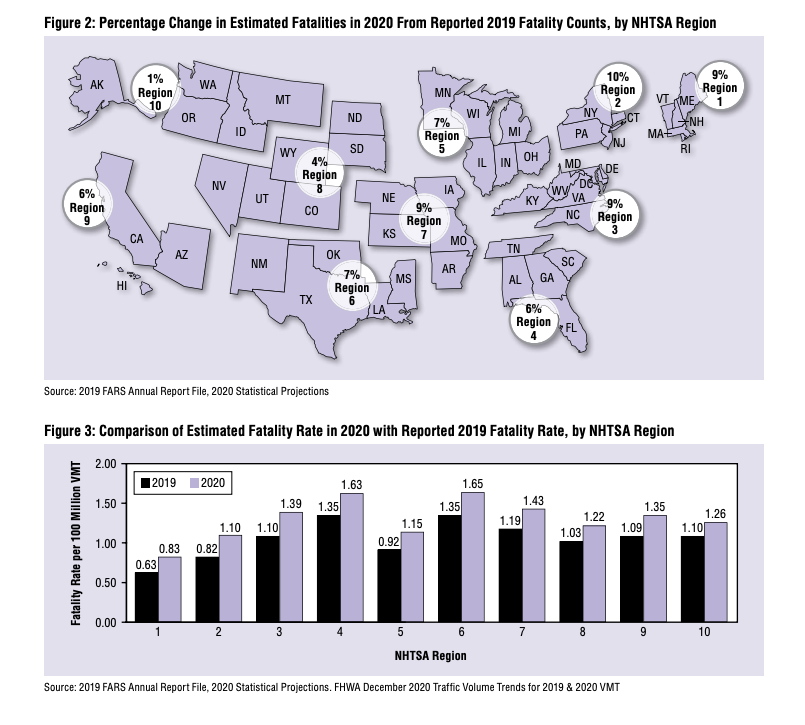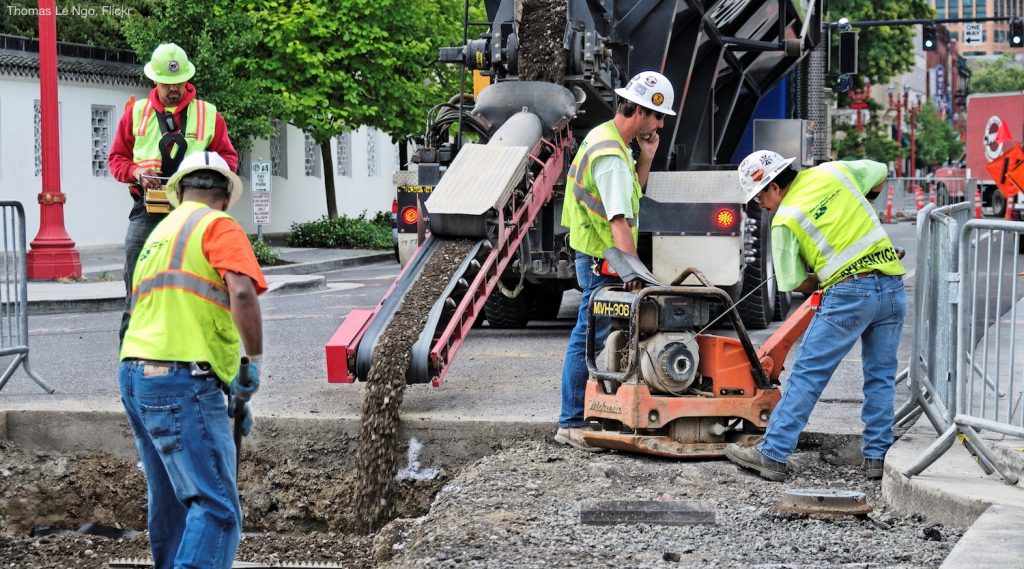

The $1.2 trillion infrastructure bill is notable both for including Congress’ most significant effort to address climate change, and its general failure to make fundamental changes to a transportation program that’s responsible for massive increases in transportation emissions, worsening state of repair, unequal access to jobs, and increasing numbers of people killed on our roadways.
This post is part of T4America’s suite of materials explaining the 2021 $1.2 trillion Infrastructure Investment and Jobs Act (IIJA), which governs all federal transportation policy and funding through 2026. What do you need to know about the new infrastructure law? We know that federal transportation policy can be intimidating and confusing. Our hub for the new law will walk you through it, from the basics all the way to more complex details.
First, you can read our short statement about the deal’s passage (signed by President Biden on Monday, November 15!) In a sea of media coverage and complicated explainers, we wanted to drill into just a few basic things you should know and remember about this new bill:
1) Transportation policy and funding is now wrapped up until 2026
Did you catch this one?
The way this deal was repeatedly referred to in the media as a standalone infrastructure bill created a lot of confusion, so it’s worth being clear on this count: Congress just wrapped up the every-five-years process of transportation reauthorization because the Senate’s five-year transportation policy proposals passed earlier this summer were the foundation of this larger infrastructure deal. There’s a lot of additional money that will go into various forms of infrastructure, but of the $645 billion total for transportation, about $300 billion is for a new five-year reauthorization to replace the expiring FAST Act. The additional ~$345 billion consists of annual appropriations of various kinds which are not guaranteed or sourced from gas taxes via the highway trust fund (see #4 below for more on that.)
So other than the annual appropriations process where Congress decides funding levels for some discretionary programs like the transit capital construction program or BUILD grants, funding and policy decisions are now finished for five years, and the focus now moves to implementation, i.e., how this money gets spent and where.
2) So what was in the five-year reauthorization included in the deal?
We took a long look at the good, the bad, and the ugly when the deal passed the full Senate back in August, and almost nothing has changed since:
[It] includes a lot of new spending, but that spending isn’t directed toward outcomes, much less the priorities that the President articulated in The American Jobs Plan. Though this bill mentions safety, climate, and equity often, as it stands, it will fail to produce meaningful shifts. “The White House will soon discover that they’ve dealt themselves a challenging hand in their long-term effort to address climate change and persistent inequities, while kicking the can down a crumbling road that’s likely to stay that way,” T4America director Beth Osborne said in our full statement after Tuesday’s final vote.
There is some good news, though. When it comes to the next five years of policy and spending, passenger rail was the biggest winner, making the expansion of reliable, frequent rail service to more Americans a cornerstone of the deal’s approach. The rail portion will “1) expand, increase, and improve service, 2) focus on the entire national network (rather than just the northeast corridor), 3) encourage more local, ground-up coalitions of local-state partnerships for improving or adding new service, and 4) make it easier to finance projects and expand that authority to transit-oriented development projects.” We explained these provisions in-depth in this post.
3) More money for transit but with policy crafted in 2015 (and before!)
The transit portion of reauthorization was never produced by the Senate Banking Committee, which means that this deal basically carried forward the status quo approach to transit policy from the now-replaced FAST Act, but with a historic amount of transit funding (along with a historic amount of highway funding.) The House’s discarded five-year INVEST Act proposal contained some vital improvements to transit policy, but it was ignored by the Senate when assembling the larger infrastructure deal.
We’ll have much more about the modest changes to the transit program in a later post—including what’s next.
4) What else was included in the non-reauthorization portions of the bill’s $1.2 trillion price tag?
This great chart from the National Association of Counties shows where the additional transportation money— outside of the ~$300 billion, five-year authorization—is going:
For more on the non-transportation inclusions in the bill, you can read this post from Smart Growth America with a broader look at the package and what was included on climate resilience, broadband, and other areas.
5) Time to hold the administration and Congress accountable for accomplishing their ambitious promises
The Biden administration has made significant promises to taxpayers about what they are going to accomplish with this historic investment when it comes to repair, climate change, safety, equity, and an equitable economic recovery from the past year and a half. They’ve assembled a tremendous team of superstar smart people at USDOT to make it happen. They’ve shown their willingness to use their administrative authority to at least temporarily halt damaging highway projects. They’ve created a litany of helpful new competitive grant programs they now need to write the rules for awarding.
But watching the president sign the bill isn’t just a celebration, it’s a cue for them to get to work with some major urgency: the first year of this money is flowing out the door already, so states are already pouring this money into projects already underway.
It will require a herculean effort from them to make sure this bill accomplishes what they believe it will. As we said when the deal was first approved by Congress on November 5, “The administration is confident they can make substantial progress on all of these goals despite those deficiencies. Most states are promising to use the flexibility they fought for to make marked improvements across these priorities. To make that happen, both the administration and the states will need to make major changes to how they approach transportation, but we know they can do it.”
Because they missed the chance to codify a wholly different approach to transportation into law, they only have the option of making changes that are administrative or imposed by the executive branch—changes which can all be undone by a future administration.
Now is the time for us, the media, advocates and local leaders of all stripes to hold them accountable for what they have promised to accomplish with this historically massive infrastructure bill.




